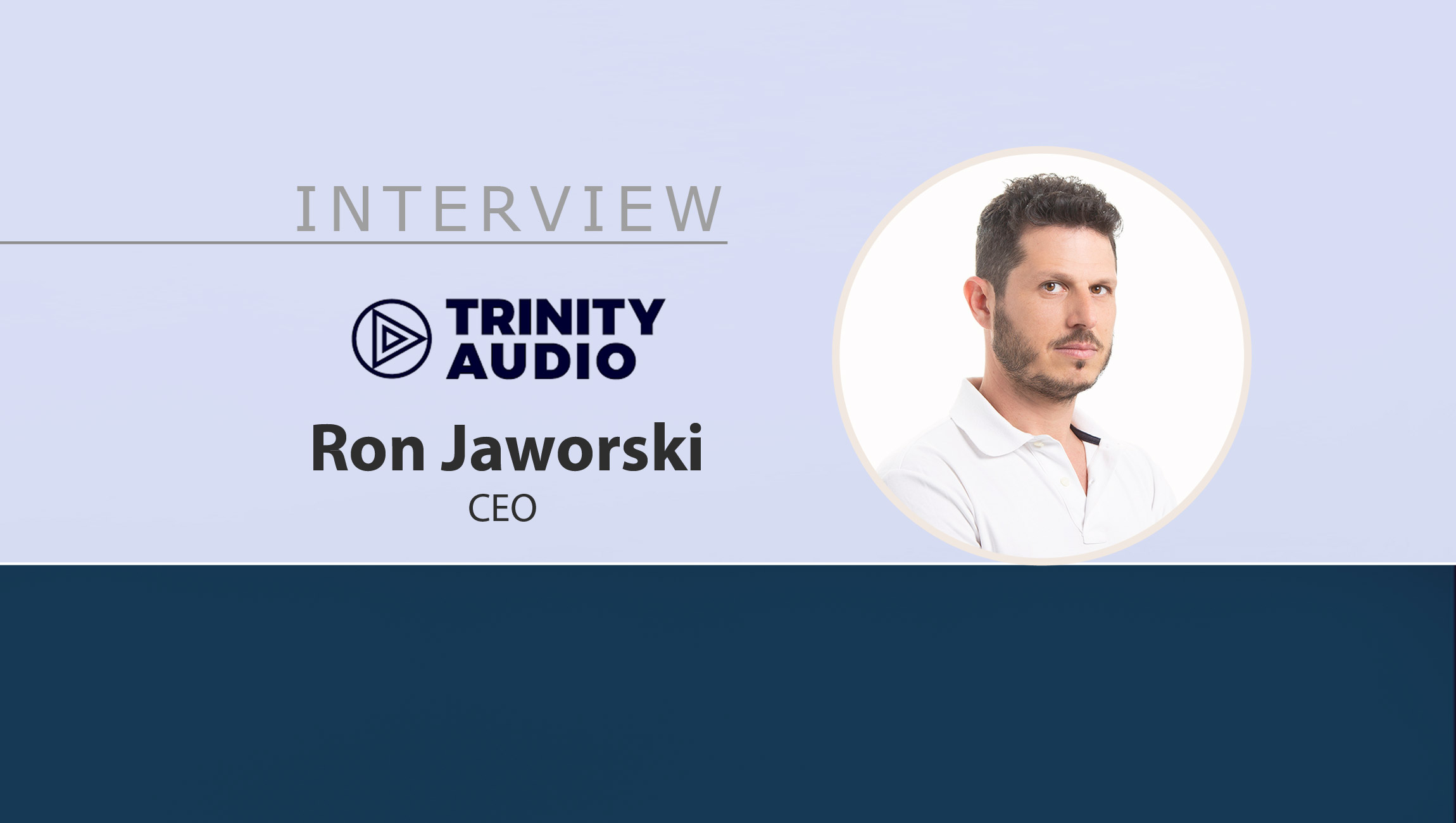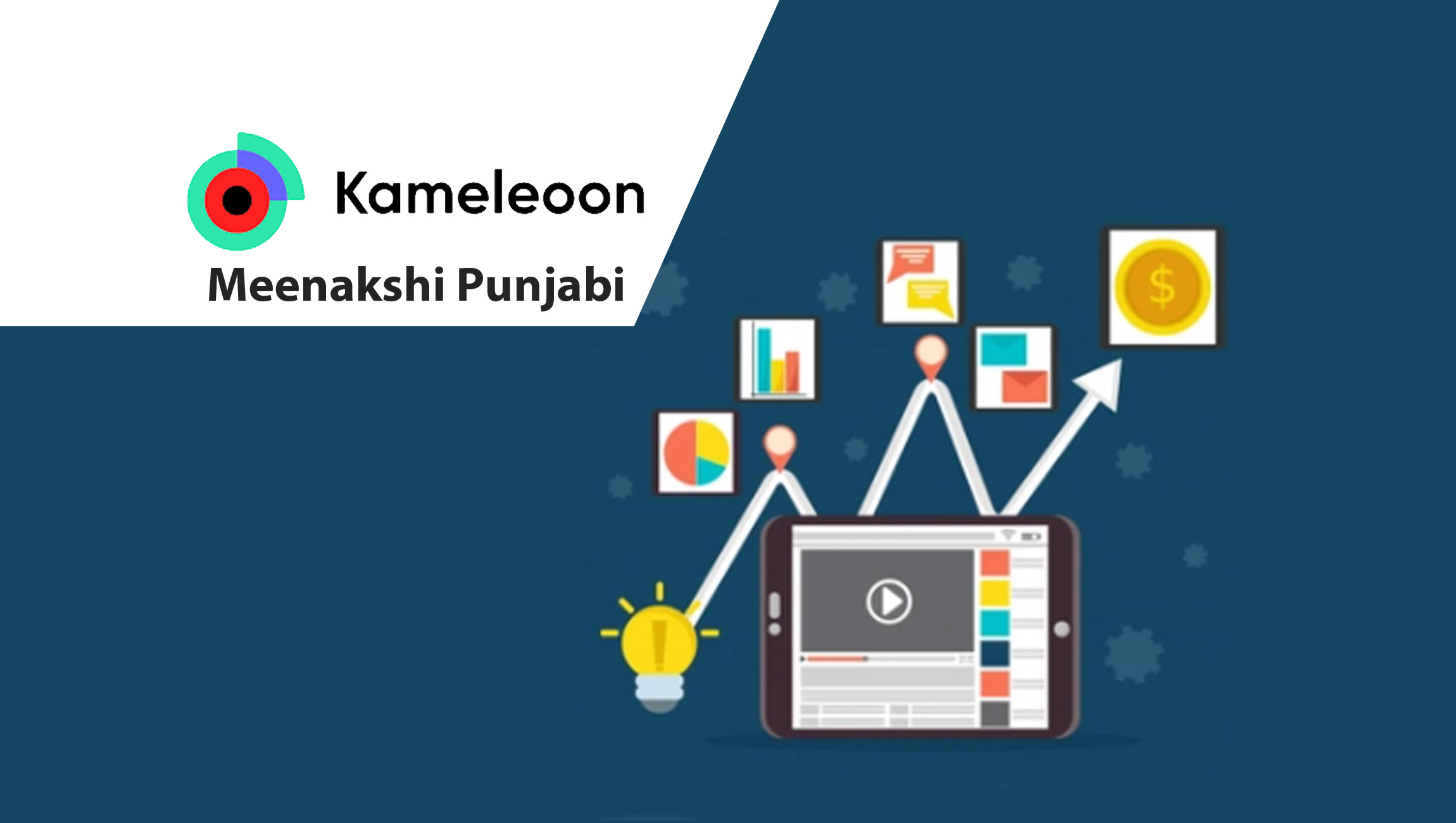Please tell us about your journey in the technology industry. What inspired you to start at Trinity Audio?
In 2014, alongside some friends, I launched a video startup that went through several evolutions and later a $13 million dollar acquisition. But my passion was always in audio and I continued to look for ways to shape the format into a more engaging experience.
Ultimately, Trinity Audio was born from an epiphany that I had in an elevator when I was reading an article. I exited the elevator and got into my car and then I thought to myself, “Why don’t we have a simple solution to read an article out loud to people while they’re busy doing other things?”
It became my goal to create a platform that unified it all in a strategic way to evolve how owners of content deliver audio experiences, so I decided to build it. That is how Trinity Audio was born in 2018.
Forming Trinity Audio was a true passion for me, as it unites my passion for audio and people around a service that benefits all. The company is poised to be the biggest audio library in the world, with more offerings and more accessibility than any audio solution to date.
What are the unique opportunities and challenges that come with leading an AI-savvy company like Trinity Audio? How does adding an AI element to your audio marketing platform actually help convince your customers and justify their faith in your platform?
Trinity Audio started as a pioneer in the audio conversion market. In time audio grew into a commodity that every content creator needed. However, now the market opportunity for audio has grown and evolved. With it, the Trinity audio solution has become a far more advanced, more easily integrated offering with more natural voices and accents than any other audio provider. Trinity Audio is powered by AI that provides quality assurance and the ability to create endless new opportunities for publishers looking to create more content, quicker, seamlessly, and aligned with their unique brand. The end result, at least according to customers like McClatchy and Newsweek, is an increase in their ability to reach more users and offer them a more sticky content experience.
In addition to all of this, let’s not forget what makes audio so amazing in the first place, its efficiency and accessibility. Audio enables people to multitask while consuming content, wherever they are and no matter what they’re doing, affording the listener more time to engage with the content they love when otherwise they may be limited.
Who doesn’t want more time to consume the content they love? As I like to say, “Content may be king, however consumption is queen!”
Our biggest challenge is educating the market to realize that “audiofiying” their content contributes to its consumption, enabling them to offer their users even more and increase their offerings and value proposition for subscribers.
AI “Text-to-Speech” solutions are becoming more and more human-like. The interaction between human beings and AI voices increases daily, in almost every aspect. Audio is a slippery slope; when you make it available to your audience it creates demand that publishers can not ignore. In a survey conducted among users exposed to our AI audio solution, more than 40% said they would be “very upset” if they no longer had access to the audio version of the content they’re consuming.
What’s the biggest surprise about AI-powered audio? What are the commonly-fed misconceptions associated with this industry?
People are surprised to learn how often they interact with AI-powered audio without realizing it.
Trinity Audio conducted an experiment where we exposed people to eight different voices that were reading the same text, and then asked them whether it was a human voice or not. 25% percent of the voices were recognized as being human, 25% were recognized as AI, and 50% were split – some were AI and some human. What they didn’t know is that all the voices were actually AI-powered. This experiment proved peoples’ bias regarding AI voices, as well as how advanced these voices actually are.
Could you tell us more about Trinity Audio’s current offerings? What does your ICP look like and from which markets?
Today, we offer our users two tiers of content creation. The first tier is a robust and scalable conversion from text-to-audio, with no heavy lifting – just one simple javascript code and all your content is available in an audio form in less than five minutes.
The second tier is ‘customization and distribution’ using Trinity Audio’s CMS, developed to manage the audio content, along with the content from our online AI editor, which provides unique audio pieces such as briefings, podcasts, and more. Once created, one can leverage the distribution capability to make the content available everywhere from Spotify to Google podcast and smart speakers.
During the COVID-19 pandemic, we learned how CMOs led their marketing campaigns with personalized Native Audio Content. What are you seeing from owners and publishers of content when it comes to their interest in audio?
From marketers to publishers and site users, we’ve seen a strong increase in demand for audio. With the isolation created by the COVID-19 and the new challenges for how we live our lives, there has been a sharp increase in the consumption of audio content that marketers, content creators, and publishers have had to adjust to quickly. If prior to COVID-19 publishers did not feel the urge to offer an audio experience, now they’re moving quickly to maximize the opportunity. We are being approached by myriad owners of content, from brands to publishers, to advise and guide them through their first steps in building their audio strategy.
How does data measure for owners / publishers of content and their interest in audio? Can you please provide some context from your market research on how audio is turning into a mainstream channel for personalized engagements with customers?
McClatchy sought out Trinity Audio to provide an audio strategy that would engage more of their readers across different channels. They found that those who consume audio are more engaged with McClatchy content overall, spending almost twice the amount of time on site, conducting more page visits and consuming nearly 170% more content. We can say that McClatchy’s advancement of the audio experiences has led to more revenue opportunities, however we’re not at liberty to disclose any specifics. That said, when it comes to audio in general, publiser’s subscribers are 1000% more likely to use audio solutions than non-subscribers.
AI in Audio Experience Management
Tell us about the future of AI-based Audio Experience management technology. How do you deliver a Unified Audio solution to your customers and align deliverables with their existing content marketing strategy?
The future of AI audio is voice moving from a monologue to dialog. Not only having your preferable content being read to you, but also enabling a voice interface to control the experience and discover more through voice queries. Similarly, there’s a Pepsi audio ad running on iHeartRadio that you can interact with, which enables the listener to use their voice to share what flavors they prefer. This is a great example of AI-based audio experience.
What kind of Digital Asset Management (DAM)/ Content Management System should a marketing team have to fully leverage Trinity Audio’s audio solution? Which CMS platforms do you currently integrate with? Or, do you provide your own DAM / CMS solutions?
We provide our own CMS that enables content creators to mix, match, distribute, edit and manage audio and playlists. It provides a unified, complete experience for all audio needs. Our CMS can manage the content we create for you, or you can upload your own. Trinity Audio integrates with WordPress, Wix and more.
What are the current benchmarks in native audio content marketing? How does Trinity Audio help customers monetize audience groups with AI and programmatic audio content?
The Trinity Audio platform offers the ability to create AI audio ads and deliver them across the Trinity Audio network. When creating playlists, content creators can add audio content marketing within the playlist. In that manner the audio advertising messaging is as native as podcast advertising, using AI voice to deliver content and advertising messaging.
We noticed Trinity Audio strategically sets up an audio experience, what’s the process for that? Do you have any tips? We are very curious about learning more about the AI lab and how it works with the wider Product Development and Marketing team at Trinity Audio.
Strategically set up an audio experience:
To have an audio experience one needs to have audio content.
The first step is to turn all your textual assets into audio. Our simple javascript integration enables owners of content to do that in minutes.
The second step is personalization – use our CMS to create relevant playlists, and embed them on your website, app, or anywhere you wish to meet your audience.
The third step is distribution. We will create audio channels for you on all the leading platforms including smart speakers, because audio is all about reach and you need to be everywhere.
The AI Lab:
The funny thing about working on AI technology, is that the manner of AI thinking starts to spread into everything you do. It fundamentally changes the way brands and publishers interact with their audiences to develop content. This is what we mean by developing a strategic audio experience! It’s a foundational shift that requires a specific process and thinking to maximize the opportunity.
Today, after working with AI for years, it has fused itself into all aspects and departments of Trinity Audio. For example, we use AI algorithms to derive conclusions on our users’ behaviours, to improve our products and services.
Customer Success and Delight
Could you tell us how large companies and big brands like McClatchy and Lenovo are benefiting from doing audio the right way?
Here are the stats we are seeing from McClatchy in regarding interactions with users in audio:
- They increased the reach to audio platforms
- Brands such as Lenovo improve their internal communications and employees have easy access to companies’ content, publications etc.
- And all of that with no heavy lifting, minimal cost on the one hand and new revenue streams on the other.
Do you agree that Data Privacy is a huge concern for marketers, especially when it comes to delivering experiences and analytics based on customer data?
Yes. This is the great thing about audio; it goes hand-in-hand with increasing subscriptions and makes it easier for marketers to analyse their users’ experiences.
IT support and customization of services are keys to adoption of any new technology, especially if it involves catering to a huge industry such as E-commerce, Content Syndication, and Digital Advertising. What kind of IT support do you offer to customers to ensure a better customer experience (CX), and security on your platforms?
We have a support team available to our clients 24/7 and we pride ourselves on being a very service-oriented company. We recently added an automated onboarding process to ease the integration process and we constantly look for users’ feedback with surveys and personal calls with our clients.
You are highly acclaimed as an AI SaaS company for Audio Content. Tell us about your AI Ethics policy. Do you think every CEO of a global tech company should have a very clear AI Ethics policy? How do you communicate your stance on AI ethics to the global users?
We view AI as a tool to improve the experience for readers. It can be an efficient tool in today’s busy lives, or as an accessibility tool for those who need it. But at the end of the day, AI should be a utility that is easily accessible, efficient, and impactful.
Our AI solution’s main purpose is to have textual content accessible via audio. We do not change or edit the content, we just make the World Wide Web accessible for all.
Any tips or advice for the young professionals looking to join or are already working in the Programmatic Audio, and AI Data Science industries in the coming months:
We are at the beginning of the audio and voice revolution; a revolution that will ride the AI tide. To get inspiration, look at the mobile revolution that started with the first iPhone, or the beginning of the Internet in the late 20th century. Many of the transformations made in those two epic revolutions will happen again, but this time in the audio and voice realm.
What are you currently reading / any book that you would recommend to our readers:
Trinity Audio is about to release its first ebook collaboration with Dr. Amir Kfir‘s book, “Nonflict.” It’s about out-of-the-box conflict resolution. I am super excited about this; I just finished listening to it for the first time (of many to come).It is such a great experience to listen to, as you can’t tell it is a non-human, AI voice that is narrating.
I am also reading “Breath” by James Nestor, a book about the lost art of breathing.
Which webinars / podcasts are you subscribed to: how do these help you stay on top of your goals?
VoiceBot AI – Bret Kinsella, who is one of the leading influencers in regards to anything AI and voice-related, and therefore super relevant to our industry.
The SaaS podcast – Interesting interviews with entrepreneurs CEO’s, CPO, and other C’s on launching succeeding and failing with SaaS.
StartUp podcast and Startup for Startups – interesting stories for anyone that is a part of a startup or planning on becoming one.
Dan Carling – Hardcore history – just because I’m such a history geek.
Thanks so much for taking the time to speak with me about the emerging opportunity for AI-audio content experiences. This was really fun! Appreciate it!

Founded in 2018, Trinity Audio, the only unified audio platform, is an AI company building the audio future. The company’s platform enables publishers and content creators of all types and sizes worldwide to turn readers into listeners. It enables people to consume information in the way that they prefer, via audio. To date, Trinity Audio has processed more text to audio than anyone else on the planet. The company is part of Nera Tech (a publicly-traded company in the TLV stock exchange), with a core mission to bring value to all three pillars of the content ecosystem: publishers, users, and advertisers through a unique content and technology solution (ConTech). The technology instantly converts content from text to audio with the most natural sounding voices, continuously learns listeners’ behavior and seamlessly integrates ads into their experience all the while recommending related content in real time. For more information, visit https://trinityaudio.ai/
Ron Jaworski is the CEO of Trinity Audio, the only unified platform that advances owners of content to strategically evolve to deliver audio experiences. Some of Trinity Audio’s top publishing clients and brands including Lenovo, McClatchy and Newsweek.
An ad-tech veteran with a deep understanding of the publisher and brands landscape, Ron has an extensive background in leading organizations. Prior to founding Trinity Audio, he co-founded TIM Media (formerly known as Meme Global Media Group). The company was later sold to Somoto for $13 million.
Ron earned his Bachelor of Science (BSc) in Computer Science from Ben Gurion University and received his EMBA in Marketing & Marketing Management from the Recanati Business School.











